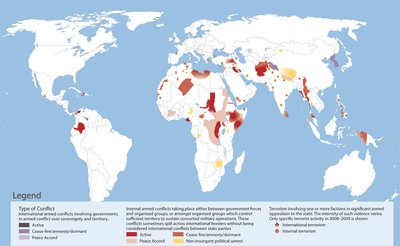

The 2010s were also a period of high battle-deaths, driven by the conflicts in Syria, Iraq and Afghanistan. We see three marked peaks in war deaths since the end of World War II: the Korean War (early 1950s), the Vietnam War (around 1970), and the Iran-Iraq and Afghanistan wars (1980s). The decline of the absolute number of battle deaths can be seen in the first visualization here that shows global battle deaths per year by world region, which pulls together data from two sources: more recent data from the Uppsala Conflict Data Program (UCDP) and older data from the Peace Research Institute Oslo (PRIO). In recent years, the annual death toll tends to be less than 100,000. In some years in the early post-war era, around half a million people died through direct violence in wars. Includes questions concerning the peace-process.The absolute number of war deaths has been declining since 1946. Yearly survey with some repeating times-series variables.

The Northern Ireland Life and Times Survey were launched in October 1998 as a resource for everyone interested in the social attitudes of people living in Northern Ireland. The TWEED dataset contains information on events related to internal (or domestic) terrorism.

Some datasets overlaps the PRIO site.ĭata classification: Aggregated level and nation state level Includes datasets as Conflict Termination and Non-State Conflict. Includes the UCDP/PRIO Armed Conflict Dataset. The datasets contains conflict data variables as intercity, time elapse, participating countries and armed fractions and groups. The PRIO site includes several datasets with variables around the armed-conflict topic.


 0 kommentar(er)
0 kommentar(er)
